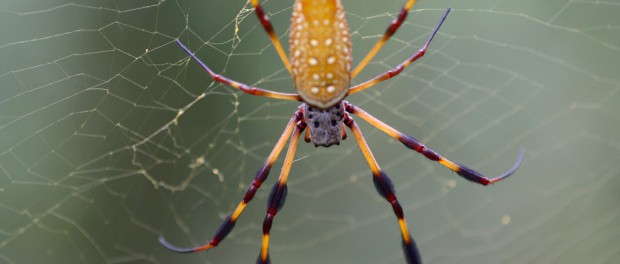Spinning spider silk
Stronger than steel
 A female golden silk orb-weaver spider. Credit: Rain0975 on flickr.com. Used under CC BY-ND 2.0 licence.
A female golden silk orb-weaver spider. Credit: Rain0975 on flickr.com. Used under CC BY-ND 2.0 licence.
Researchers at Dalhousie University in Nova Scotia, Canada, are working out how to make artificial spider silk.
Spiders build their webs out of lightweight, incredibly tough, slightly stretchy spider silk. It is stronger than steel and tougher than kevlar, which is used to make puncture-proof bicycle inner tubes.
The building blocks of the silk are particular types of a substance called protein. (Different kinds of proteins are found in your hair and in foods such as meat and eggs). Jan Rainey and his coworkers have worked out exactly which proteins make up the spider silk and how they are joined to each other.
The difficult part, though, is spinning the proteins into long strands. The researchers are still working on that.
Spiders make up to seven different types of silk, with slightly different properties. For instance, the toughest sort is used to wrap up prey caught in the spider’s web.
Normal silk comes from silk threads spun by silk worms when they are making a cocoon. Groups of silk worms are fairly easy to look after and their cocoons can be unwound into lengths of silk thread. However, spiders are more difficult to look after and in groups may begin to eat each other.
It’s also much harder to harvest spider silk, although it can be done. In this video from the Oxford Silk Group, a female golden orb-weaver spider is made sleepy with carbon dioxide gas (a special type of air) and held safely in place.
The spider silk is pulled from her using tweezers and attached to a spool. Then a motor extracts between 30 and 80 metres of silk before she is released unharmed.






Leave a comment